Enemy struck Sumy with drone for fourth time in day
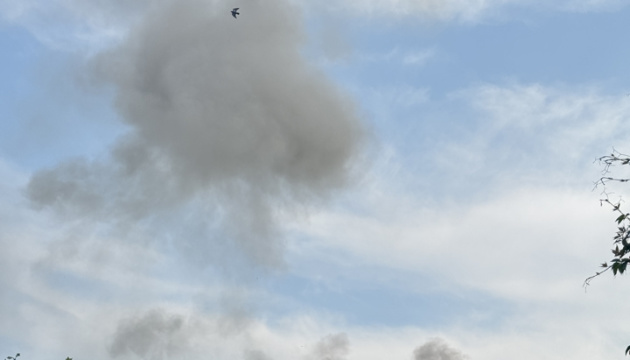


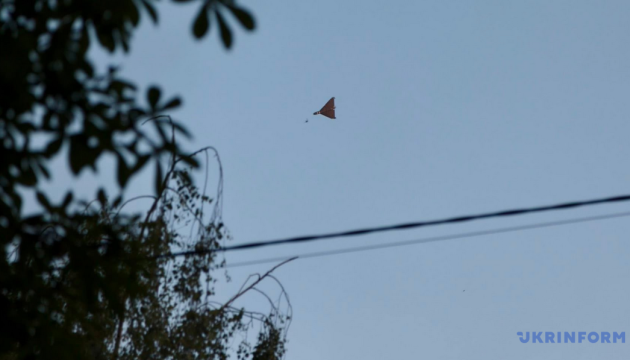

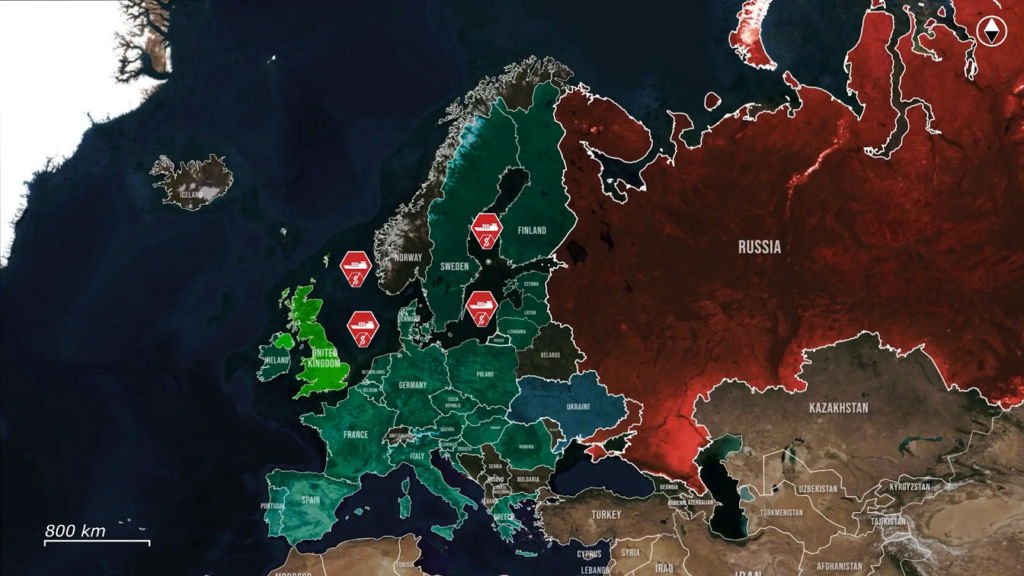

Day 1249
On 25 July, the biggest news comes from Europe.
New sanctions from the United Kingdom and the European Union are tightening the noose around Russia’s shadow fleet, the covert network of tankers that has long helped Moscow dodge oil export restrictions. This time, enforcement is not only more coordinated but also more surgical, and the effects are beginning to show across the broader infrastructure of Russia’s war economy.
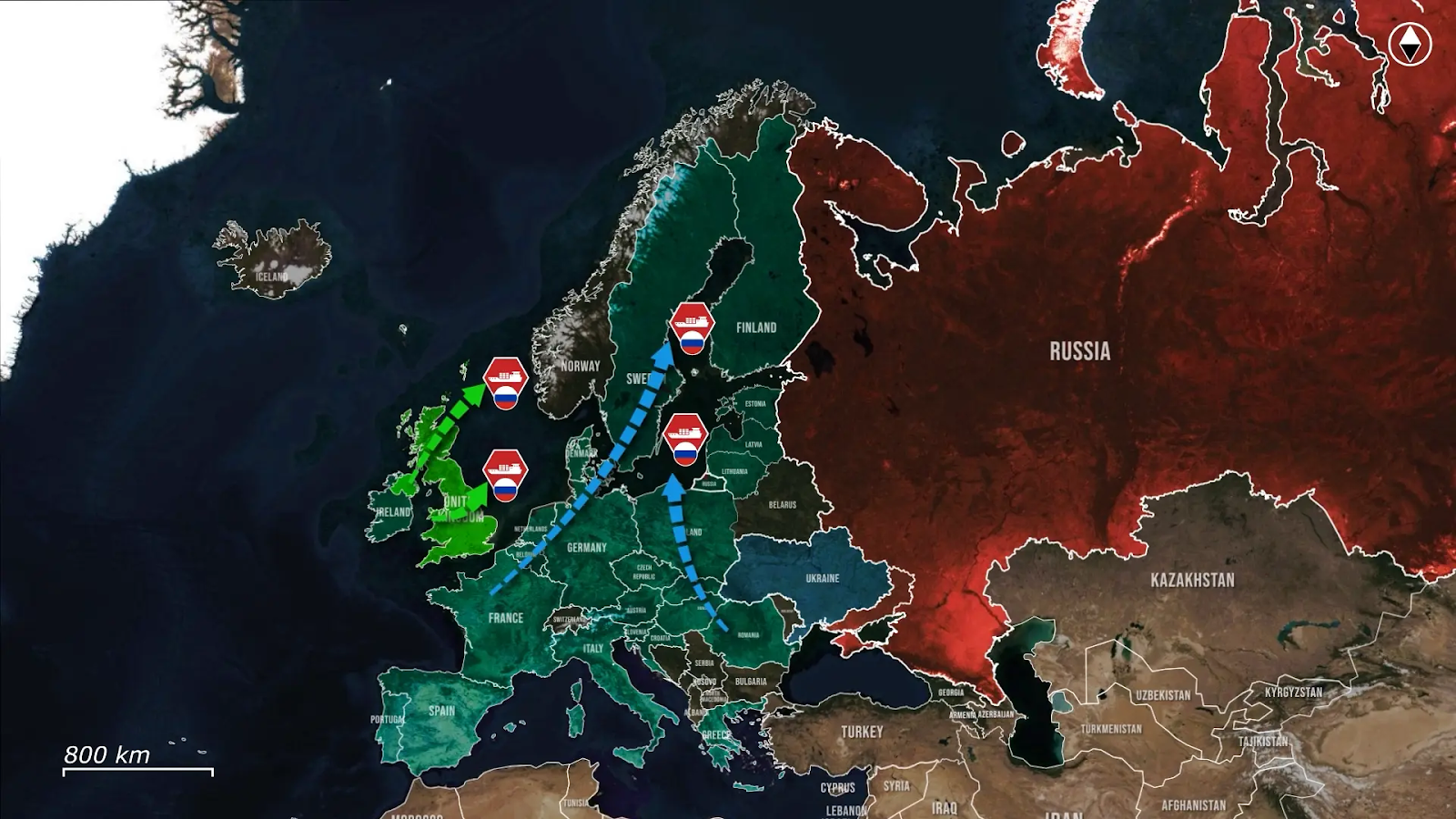
Most recently, the United Kingdom unveiled its latest sanctions package, which directly targets dozens of tankers suspected of transporting Russian oil in violation of the G7 price cap, operating under flags of convenience and obscure ownership structures to avoid detection. London has now imposed asset freezes on over 100 shadow fleet vessels and sanctioned several front companies that provide critical insurance, financing, and logistical support, embedded in global maritime hubs. Beyond targeting individual vessels, the UK’s restrictions also prohibit any UK-based companies from interacting with ships or firms linked to sanctioned oil trade, thereby closing off access to a broad range of legal and financial services that have long sustained the shadow fleet.
In parallel, the European Union has adopted its 18th sanctions package, with new measures aimed at undermining the legal and logistical foundations of shadow fleet operations. The package introduces enhanced penalties for any port offering services to re-flagged or disguised Russian tankers, creates a public blacklist of vessels involved in price cap violations, and extends sanctions to intermediaries that provide false documentation regarding the origin of cargo. Perhaps most importantly, the European Union now authorizes penalties against third-party countries, companies, and organizations that facilitate Russian circumvention efforts.

This move places significant pressure on states such as Türkiye and the United Arab Emirates, which have quietly hosted the fleet’s support infrastructure. Taken together, the actions of the United Kingdom and the European Union amount to the most comprehensive assault yet on Russia’s oil export system.

The effects of this crackdown are already being felt in the water. Earlier this year, a Russian-affiliated tanker docked in Belgium, and was only later identified as part of the shadow fleet, triggering internal reviews across European ports and prompting the introduction of stricter inspection protocols. Since that incident, insurance firms have come under increased scrutiny, maritime monitoring has intensified, and cooperation between European customs and naval forces has expanded. This makes it significantly harder for Russian tankers using falsified or re-flagged registrations to access European ports or services, forcing the fleet into riskier, longer, and more expensive trade routes.

These constraints are showing the effect of a deeper financial crisis. Russia is no longer able to rely on stable dollar-denominated transactions and has instead turned to trading with strategic partners, paying Iran 104 million dollars in gold for Shahed drones and offering weapons and industrial components to North Korea in exchange for artillery shells and frontline soldiers. As covered in a previous report, the Kremlin has also resorted to using cryptocurrency and shell companies based outside of Russia to hide the nature of arms deals and payment transfers. These improvisations may help Moscow stay afloat in the short term, but they reflect how their economic system is losing access to hard currency and struggling to sustain even the most basic elements of war finance.
The geographic consequences are just as significant. With the Baltic Sea under increasing surveillance and the Black Sea heavily contested, Russia has shifted some of its shadow fleet activity to Arctic ports such as Murmansk; however, these are a last resort, as they remain ice-free for only seven to eight months of the year. Yet even these fallback routes are becoming less viable, as the United Kingdom and Norway have increased maritime patrols in the Barents and North Seas, regions where they maintain logistical and geographic naval advantages. The result is a tightening noose around the shadow fleet: as evasion options shrink and enforcement improves, Russia’s ability to maintain oil flows and convert the revenues into weapons faces a steadily rising cost curve.

Overall, the clampdown on Russia’s shadow fleet marks a shift from symbolic pressure to systematic disruption. As enforcement expands from financial tools to maritime routes themselves, Moscow faces a narrowing horizon, where every export, workaround, and transaction becomes harder to hide, more expensive to maintain, and less capable of sustaining the war.
In our regular frontline report, we pair up with the military blogger Reporting from Ukraine to keep you informed about what is happening on the battlefield in the Russo-Ukrainian war.
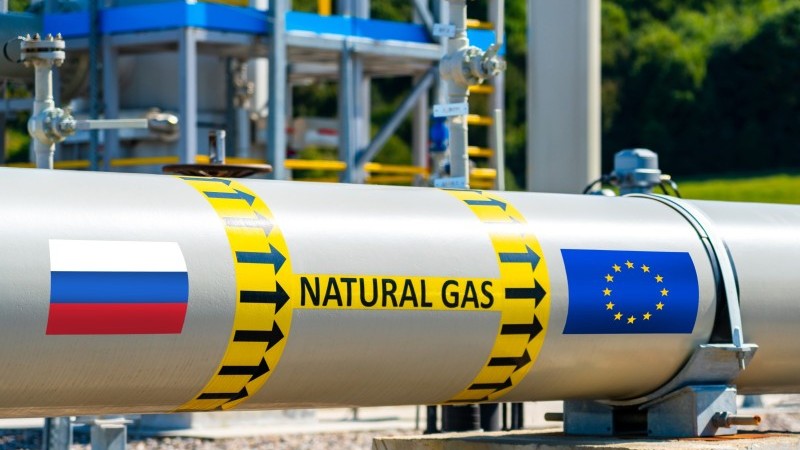

European Parliament lawmakers are pushing to accelerate the EU’s ban on Russian gas imports by one year, moving the deadline from January 2028 to January 2027, Reuters reported on 25 July.
The EU vowed to reduce its dependence on Russian gas following the Russian full-scale invasion of Ukraine. The bloc cut imports by more than half since 2022 through diversification to other suppliers and increased LNG (liquefied natural gas) purchases.
The recent proposal comes from deputies representing the Parliament’s largest political group, the European People’s Party, and the Greens, who favor a tougher stance than the European Commission’s June proposal.
Vaidere has also proposed requiring governments to impose penalties on companies that violate the ban, “potentially including by revoking licences for energy trading,” Reuters reported. Niinisto wants a full ban on Russian oil imports from January 2027, which the European Commission did not propose.
The European Parliament will vote in autumn to confirm its negotiating position with EU countries. The final measures require approval from both Parliament and a qualified majority of EU member states. It means that Hungary and Slovakia cannot block the decision despite their continued imports of Russian pipeline gas and opposition to EU-wide bans.
Under the Commission’s original proposal, the EU would begin phasing out Russian gas imports under new and short-term contracts from January 2026, with complete elimination by January 2028.
Russian gas supplied about 19% of Europe’s needs last year through the TurkStream pipeline and LNG shipments, down from roughly 45% before Moscow’s 2022 invasion of Ukraine. This share is expected to fall to 13% in 2025 as the EU works to end what it calls “decades-old energy relations with Europe’s former top gas supplier.”


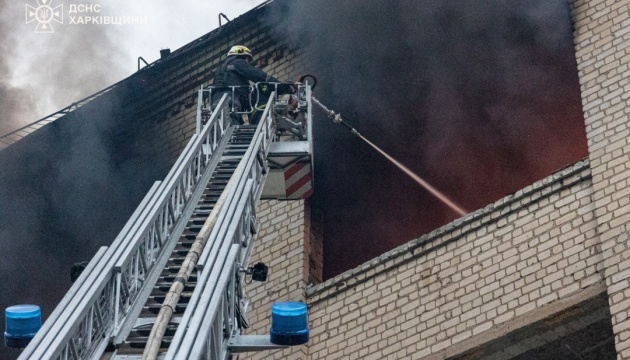

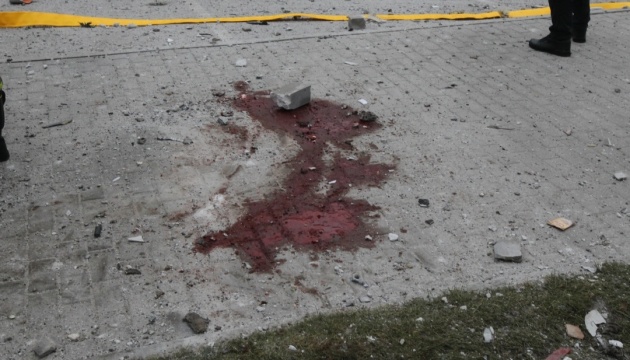

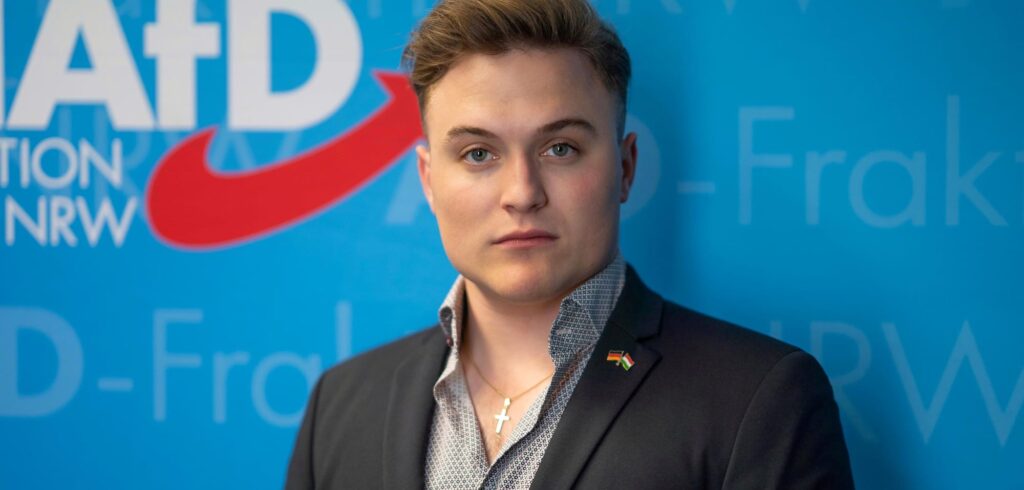

Tim Schramm, a 22-year-old deputy chairman of the Alternative for Germany (AfD) district association in Wuppertal, Germany, faces expulsion from the far-right party after serving as a volunteer in the Ukrainian army from March to June 2024, Welt reported on 23 July.
According to the German media, which obtained the exclusion application from the North Rhine-Westphalia regional leadership, Schramm is accused of “extremely party-damaging behavior.”
The application, authored by AfD European Parliament member Hans Neuhoff, seeks confirmation of the immediate withdrawal of Schramm’s membership rights, which the board has already decided by majority vote.
“By serving in the Ukrainian army and publicly commenting on his participation in combat operations, the respondent seriously violated the principles and order of the party, causing it significant damage,” the application reads.
Schramm told Nius portal journalists that he first visited Ukraine in 2022 when delivering humanitarian aid to the combat zone. At age 19, he attempted to join the International Legion of the Ukrainian army but was rejected. In late 2024, he tried again to join Ukrainian forces, this time “through connections,” as he explained, successfully entering the Territorial Defense Forces of Ukraine in a unit from Eastern Ukraine.
The young politician served as a mortar gunner and drone pilot, fighting against Russian forces.
“We shot, we were shelled, launched drones and were attacked by drones ourselves. I cannot say more for security reasons,” Schramm said.
During his frontline service, nobody from his party knew about his activities.
The regional board criticized Schramm for reporting about his mission “in a boastful manner” during interviews. T
he party maintains an “anti-interventionist line” and opposes arms deliveries to Ukraine. Leading AfD politicians “repeatedly emphasized that Germany should stay out of the Ukraine war.”
“Defending the free world alongside a European people is apparently already National Socialism for Hans Neuhoff. Neuhoff’s actions correspond to those of members of Putin’s party United Russia,” Schramm responded to accusations.
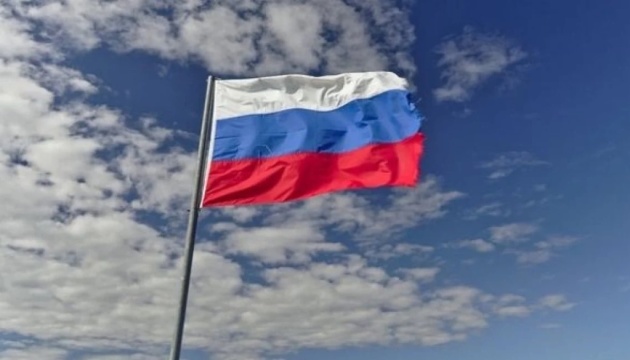

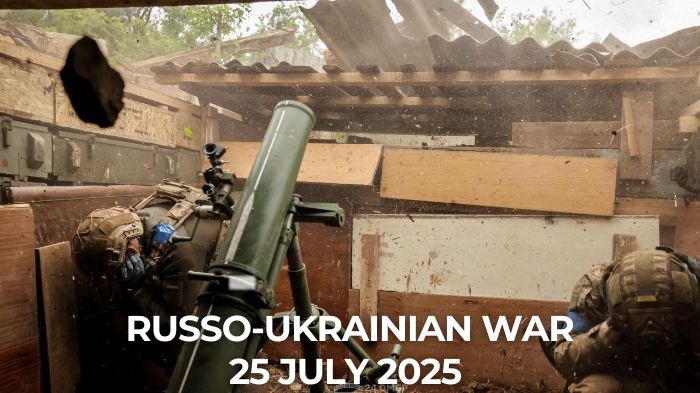

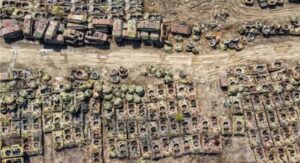 |
Russia’s last tank yards go dark as every inch in Ukraine demands more sacrifice. Russian workers are pulling the last Soviet tanks from storage yards that used to hold hundreds. The math is unsustainable. |
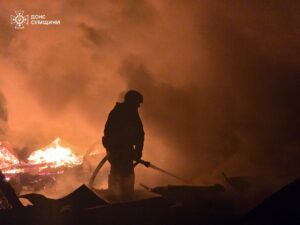 |
Russia built Ukraine’s drone storm over three years — 2025 is when it finally breaks. Russia’s drone war Ukraine’s allies thought they understood is about to change entirely — and Europe is not ready for what breaks loose in 2025. |
 |
Vacancies: News reporter, Defense tech reporter, Head of SMM. Euromaidan Press is expanding and searching for professional soulmates who believe in independent journalism. |
. The missile spoke louder than grief.
“Five in one trench, while enemy storming from three sides”: Ukrainian machine gunner survives deadly battle near Pokrovsk. Roman “Peugeot” and his unit survived a Russian assault in Donetsk Oblast.
Frontline report: Russian Sumy offensive stalls after repeated counterattacks drain manpower without territorial gains. Russian forces near the frontline faced critical manpower shortages with reserves either eliminated in previous failed assaults or positioned too far away to provide timely support.
Ukrainian hero saves 1,000 vehicles under fire — and surprises Bundeswehr instructor. Awarded for courage, Andrii now flies drones into enemy trenches while his daughter waits for him to come home.
Drone attacks span 10 Russian oblasts as Azot plant targeted for second time. Russian air defense intercepted 105 drones overnight as attacks hit the Nevinnomyssk Azot chemical plant, which supplies materials for artillery shell production, for the 2nd time in two months.
Russia once again finds way to evade Ukraine’s smartest defenses against its deadliest drones
. Russia has adapted again, forcing defenders into a new phase of drone warfare.
Ukraine to receive radars for Rheinmetall’s Skyranger 30 air defense gun system, which also guards Bundeswehr. The aid is a critical reinforcement as Russian missile and drone attacks hit record levels.
Ukraine’s cyber warriors crush Russian control systems in Crimea, steal 100TB of secrets. A covert cyber assault crippled occupation networks, downloaded troves of classified data, then wiped everything clean.
Zelenskyy: Ukraine has agreements on 3 Patriot systems, but needs a dozen. Germany will fund two Patriot systems and Norway will pay for a third.
Ukraine wants to sell $ 10-30 bn worth of drones to the US – Zelenskyy. President Volodymyr Zelenskyy said that Donald Trump has agreed to purchase Ukrainian-manufactured drones through contracts potentially worth up to $30 billion, marking a shift in defense trade between the two nations.
Ukraine receives $ 399 mn radar package from German defence contractor HENSOLDT. Ukraine will receive radar systems capable of tracking 1,500 simultaneous targets across a 250-kilometre range under one of the largest single military technology orders since the war began.
UN sounds alarm: Nearly 70% of funding to help millions of Ukrainians is lacking. Despite escalating war and mounting civilian suffering, the UN has secured just 34% of its $2.6 billion aid target for Ukraine in 2025.
NATO’s new chief in Europe arrives in Kyiv, with frontline defense and Patriot systems in focus. NATO’s newly appointed commander in Europe, General Alexis Grinkevich, arrived in Kyiv on 25 July to meet Ukraine’s top military leadership.
Only 1 in 3 Americans back Trump’s Ukraine policy amid broader disapproval – poll shows. Support for President Trump’s handling of Ukraine has dropped to 33%, part of a broader decline that has pushed his overall approval rating to a second-term low of 37%, according to new Gallup polling data.
Polish FM Sikorski warns Zelenskyy: “Worst thing” would be abandoning anti-corruption fight. Polish Foreign Minister Radosław Sikorski warned Ukrainian President Volodymyr Zelenskyy that abandoning anti-corruption efforts would be his “worst” possible decision, as Ukraine grapples with threats to its key investigative agencies’ independence.
Zelenskyy dismisses “fake” reports of Ursula von der Leyen call over anti-corruption law. Ukrainian President denied media reports claiming European Commission President Ursula von der Leyen expressed concerns to him about legislation weakening anti-corruption agencies, calling such reports “fake” during a press meeting.
Russia rains fire on Ukraine daily — even Trump’s deadline has not stopped bloodshed. “There is no safe place in Ukraine today,” the UN warned, as Russia’s relentless bombardment pushed civilian casualties to their highest in years.
Mine nearly ended Ukrainian female medic’s life, but she fought tougher war within — and chose harder fight. After the blast nearly tore her apart, Nataliia Vysotska faced a more brutal fight inside: to stay down, or rise again.
Russian provocateurs try to spark anti-Zelenskyy revolution—Ukrainian media sees through operation immediately. Real protesters demanded institutional accountability; fake ones called for regime change.
Ukraine’s Parliament sets day for consideration of Zelenskyy’s bill on independence of anti-corruption agencies. Nine days after triggering nationwide protests by subordinating Ukraine’s top anti-corruption agencies to the prosecutor general, parliament reportedly will vote on 31 July on President Volodymyr Zelenskyy’s bill to restore their independence
Read our earlier daily review here.
You could close this page. Or you could join our community and help us produce more materials like this.
We keep our reporting open and accessible to everyone because we believe in the power of free information. This is why our small, cost-effective team depends on the support of readers like you to bring deliver timely news, quality analysis, and on-the-ground reports about Russia's war against Ukraine and Ukraine's struggle to build a democratic society.
Become a patron or see other ways to support.


A BBC Russian investigation has documented the deaths of at least 245 eighteen-year-old Russian contract soldiers in Ukraine between April 2023 and July 2025.
This followed Russian President Vladimir Putin’s repeated claims that no 18-year-olds would be sent to fight.
The deaths occurred after Russia quietly dropped restrictions in April 2023 that previously required men to complete at least three months of conscript service before signing military contracts. Now any 18-year-old who has finished school can enlist directly as a contract soldier.
The BBC investigation, part of an ongoing project using open sources to count Russia’s war dead, found that most of the 245 identified soldiers joined the armed forces voluntarily, based on published obituaries. The real numbers are likely higher since not every death is publicly reported.
Russia has avoided national mobilization by offering substantial financial incentives to volunteers, particularly attractive to those in poorer regions with limited job prospects. The military recruitment now extends directly into schools and colleges.
Since the full-scale invasion began, teachers have been legally required to hold classes about the “special military operation.” Military recruiters attend career lessons, and a new subject called “The Basics of Safety and Homeland Defence” was introduced in September 2024, teaching students to use Kalashnikov rifles and hand grenades.
The investigation revealed that since the start of the full-scale invasion, at least 2,812 Russian men aged 18-20 have been killed in Ukraine. By late July, the BBC had established names of 120,343 Russian soldiers killed during the war.
Military experts estimate this represents 45-65% of actual deaths, suggesting total Russian military fatalities could range from 185,143 to 267,500.
In Ukraine, the minimum conscription age is 25, five years higher than Russia’s recruitment threshold.


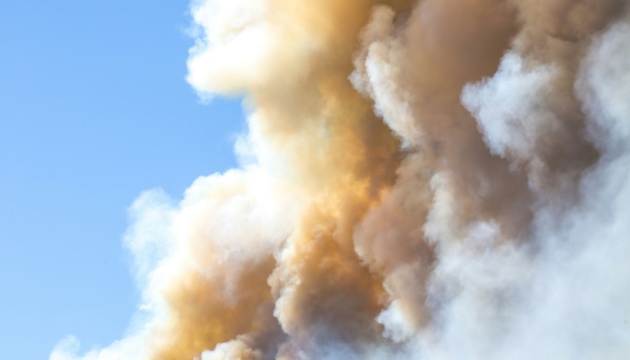

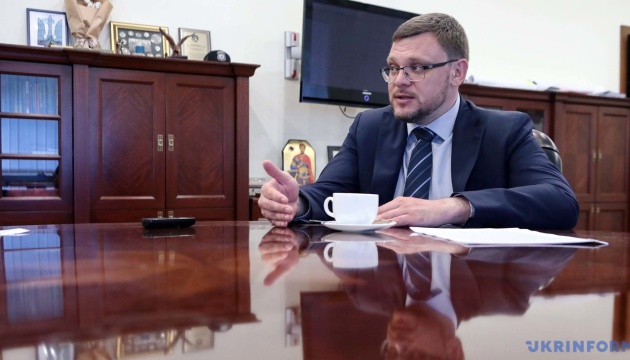

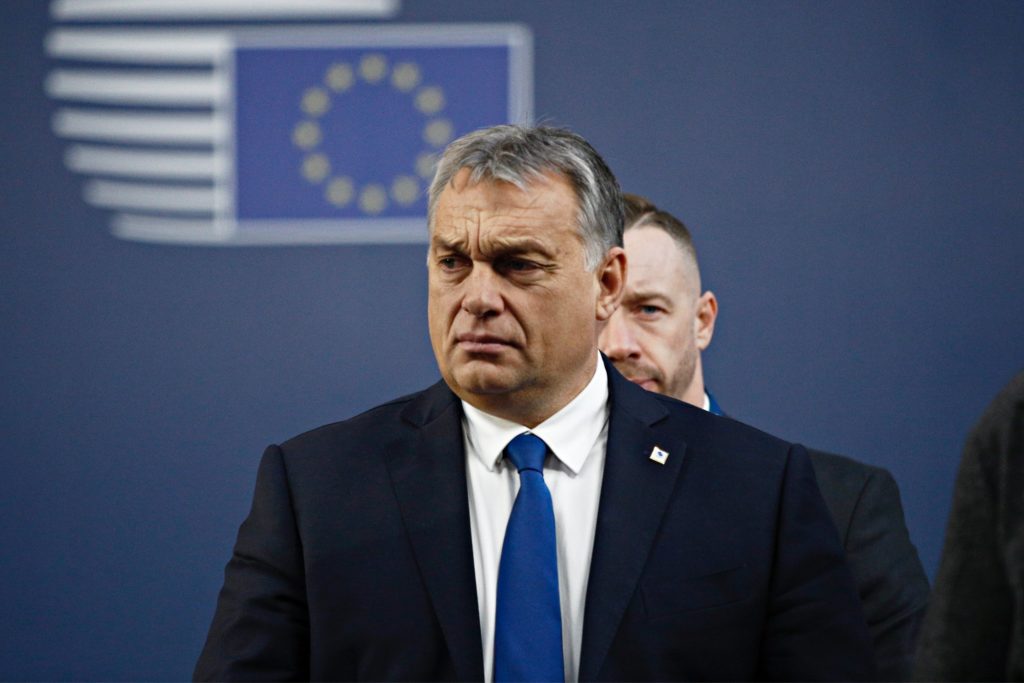

Hungarian Prime Minister Viktor Orban on 25 July proposed “strategic cooperation” with Ukraine instead of full European Union membership, arguing that Kyiv’s EU accession would bring the war with Russia directly into Europe’s core.
The Hungarian government, widely viewed as the EU’s most pro-Russian leadership, has blocked or delayed military aid to Ukraine, maintained ties with Russian President Vladimir Putin, and repeatedly echoed Kremlin narratives regarding the war.
“EU membership for Ukraine would drag the war into the heart of Europe, a risk our families should not have to face,” Orban wrote on X. “These times call for calm judgement, not theatrical threats.”
The Hungarian leader outlined his country’s alternative approach as “pragmatic, flexible, and rooted in mutual interest — not irreversible integration.” This position puts Hungary at odds with 26 other EU member states, which on 26 July declared support for continued accession talks with Ukraine and agreed to consider the European Commission’s assessment that Ukraine is ready to open the “Fundamentals” cluster of negotiations.
Orban characterized Ukraine as a “buffer state” and drew parallels to Hungary’s Cold War experience.
The Hungarian government has cited domestic opposition to Ukraine’s EU membership as justification for its stance. In a national consultation announced 26 June, Budapest claimed 95% of participants rejected Kyiv’s accession. Orban publicly voted against Ukrainian membership and shared a photo of his ballot in April.
However, the poll’s credibility faced scrutiny. Opposition leader Peter Magyar dismissed the consultation as a “government propaganda campaign” and cited internal data from Magyar Posta indicating only 3-7% of mailed ballots were returned.
Telex reported that the voting system could be manipulated, with testing showing users could vote twice using different email addresses.
Ukraine applied for EU membership shortly after Russia’s full-scale invasion in February 2022 and received candidate status within months. As an EU member, Hungary holds veto power over Ukraine’s accession progress.
Earlier in July, Orban claimed that most EU countries would vote against Ukrainian membership if “national referendums” were held, similar to Hungary’s consultation. Political director and advisor to Orban, Balazs Orban, recently stated that Ukraine’s war against Russia is not fought for Hungary’s security.
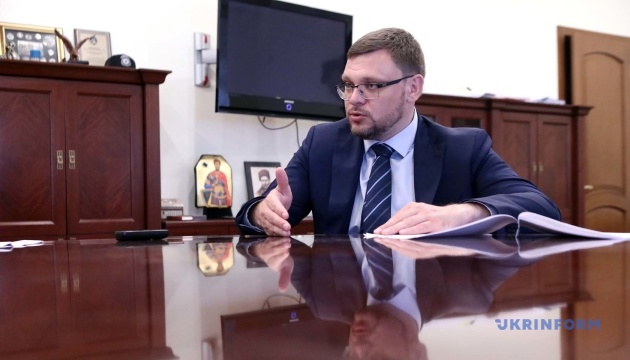

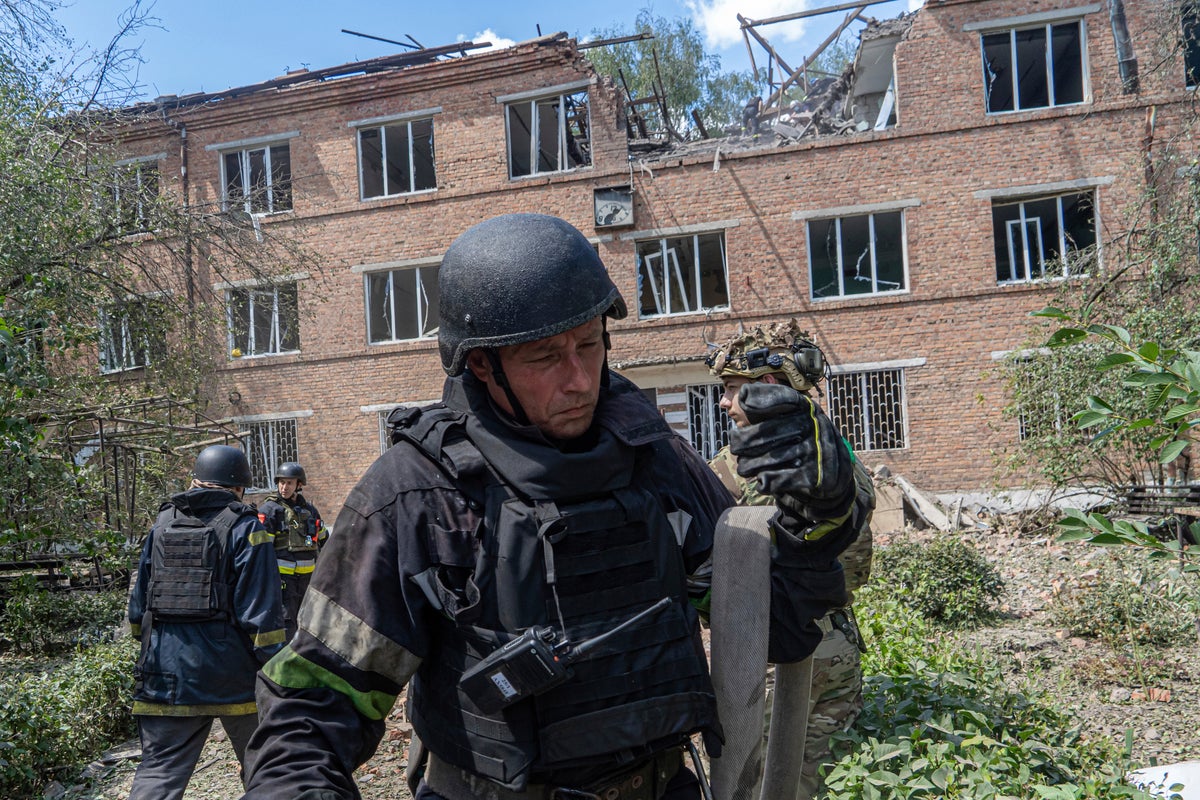

© Copyright 2025 The Associated Press. All rights reserved
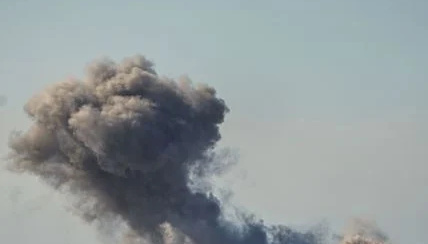

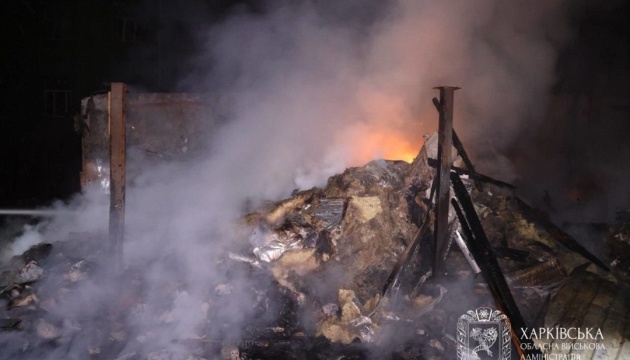

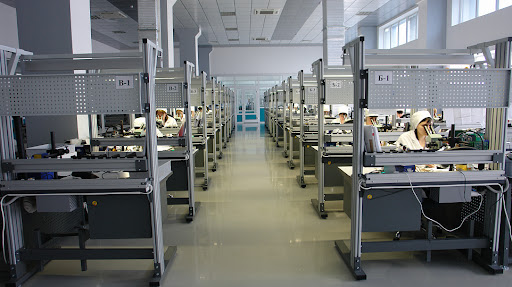

Ukrainian Security Service long-range drones struck the Signal plant in Russian Stavropol on 26 July, targeting one of Russia’s largest radio electronics manufacturers, hromadske reported, citing a source in the Security Forces.
One of the strikes reportedly hit building No. 2 (workshop No. 5), where” expensive imported equipment is located — machine tools based on numerical program control,” the source told hromadske.
The second strike was recorded in building No. 1, which houses workshop No. 17 for radio electronic devices.
The Signal plant specializes in producing various types of electronic warfare systems, radar, radio navigation equipment, and remote control radio equipment for Russia’s military-industrial complex. The facility operates under international sanctions.
The targeted workshops house critical infrastructure for military production: from imported machinery with numerical program control systems to radio electronic devices essential for military communications and navigation systems.
Russia’s Defense Ministry reported intercepting 54 unmanned aircraft overnight on 26 July across five oblasts, as well as over temporarily occupied Crimea and the Azov and Black Seas. By morning, Russian forces claimed to have downed six additional drones over North Ossetia and Moscow Oblast.
The attack represents a significant strike on Russia’s defense manufacturing capabilities, targeting a facility that produces electronic warfare equipment and radar systems used by Russian forces.


Elon Musk ordered the shutdown of Starlink internet coverage near Kherson during Ukraine’s counteroffensive in September 2022, disrupting military operations and preventing Ukrainian forces from surrounding Russian positions, according to three sources familiar with the command, Reuters reported on 25 July.
Kherson was occupied by Russian forces on 2 March 2022, and Ukraine launched its counteroffensive to retake the oblast on 29 August 2022. Kherson city and the entire right bank of the Dnipro River of Kherson Oblast were de-occupied by Ukrainian forces on 11 November 2022. The de-occupation encompassed all territory west of the Dnipro River in Kherson Oblast, including the city of Kherson itself; areas east of the river remained under Russian control.
According to Reuters, when Ukrainian troops attempted to reclaim territory from Russian forces, Musk instructed a senior SpaceX engineer to cut service in the strategic region north of the Black Sea. The order affected at least 100 Starlink terminals and extended to other Russian-occupied areas including parts of Donetsk province.
“We have to do this,” Michael Nicolls, the Starlink engineer, told colleagues upon receiving Musk’s directive, according to one source. Company staff complied with the order, causing hexagon-shaped cells to go dark on internal coverage maps.
The shutdown created immediate battlefield consequences for Ukrainian forces. Troops faced communications blackouts, surveillance drones lost connectivity, and artillery units struggled to target Russian positions without Starlink’s guidance systems. Ukrainian military officials and advisors confirmed the service failures occurred near front lines during the counteroffensive.
“The encirclement stalled entirely,” a Ukrainian military official told Reuters. “It failed.” The source said Ukrainian forces were unable to surround Russian positions in Beryslav, east of Kherson’s administrative center, due to the communications breakdown.
Despite the setback, Ukraine’s counteroffensive ultimately succeeded in reclaiming Beryslav, Kherson city, and additional occupied territory. However, the shutdown represents the first documented instance of Musk actively cutting Starlink coverage over an active battlefield during the war.
The decision “shocked some Starlink employees and effectively reshaped the front line of the fighting, enabling Musk to take ‘the outcome of a war into his own hands,'” according to another source.
Musk’s intervention contradicts his previous public statements about Starlink operations in Ukraine. In March, he wrote on X: “We would never do such a thing.”
This incident differs from a previously reported September 2022 case near the Black Sea, where CNN reported that Musk disabled Starlink near occupied Crimean coastline to prevent Ukrainian attacks on Russian naval forces.
Neither Musk nor Nicolls responded to Reuters requests for comment. A SpaceX spokesperson called the reporting “inaccurate” and referenced a company post stating “Starlink is fully committed to providing service to Ukraine.” The spokesperson did not specify inaccuracies or answer detailed questions about the incident.
Ukrainian President Volodymyr Zelenskyy’s office and the Ministry of Defence did not respond to requests for comment, according to the report.
Musk said, during a clash with Polish Foreign Minister Radosław Sikorski on X, that,“No matter how much I disagree with the Ukraine policy, Starlink will never turn off its terminals.” He claimed that without it, Ukraine’s “entire front line would collapse.”


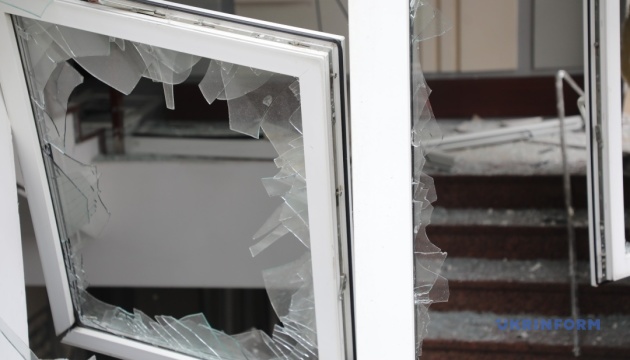


The prime minister is nervous at the prospect of possibly having to play golf with Donald Trump, but he will have much bigger problems on his mind when they meet at Turnberry, Political Editor David Maddox reports

© Getty
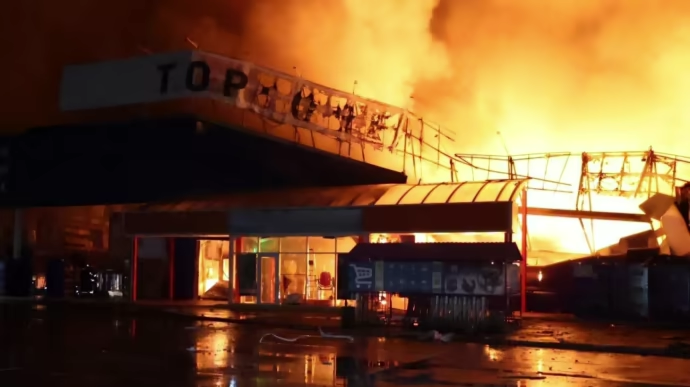

Russian forces launched a massive attack on Dnipro, Sumy, and Kharkiv oblasts, injuring 14 people and killing two others, according to regional authorities.
The Russian military regularly attacks Ukrainian oblasts with various types of weapons. Russia’s leadership denies that the Russian army has been conducting targeted attacks on the civilian infrastructure of Ukrainian cities and villages, killing civilians and destroying hospitals, schools, kindergartens, energy and water supply facilities.
On the night of 26 July, the Russian forces attacked with 235 air assets (208 UAVs and 27 missiles of various types). Ukraine’s Air defence shot down 200 Russian air targtes (183 attack UAVs and 17 missiles of various types)
Russian occupying forces launched a massive combined attack on Dnipro and the oblast overnight on 26 July, killing three people and injuring six others, Dnipro Oblast Governor Serhiy Lysak said.
Air defense forces shot down seven missiles and 26 drones, according to Lysak.
The attack claimed the life of a man in Dnipro, while a woman was injured. A multi-story building sustained damage, and industrial enterprises were hit. Fires broke out across multiple locations, including a parking lot where vehicles caught fire.
The Dniprovskyi district experienced several fires, with flames engulfing a shopping center. Fires also erupted at an enterprise, and dry grass burned in various locations, according to the regional administration head.
One person died in Dniprovskyi district, while four others sustained injuries, Lysak said. Russian forces struck the Pokrovska community in Synelnykivskyi district with guided aerial bombs, causing a fire to break out.
Russian forces also hit the Pokrovska community in Nikopolskyi district with an FPV drone and attacked Marhanetska community. No casualties were reported.
Dnipropetrovsk Oblast, located several tens of kilometers west of the frontline, has been under repeated Russian attacks.
Russian forces also launched a massive attack on Kharkiv and the oblast, Governor Oleh Syniehubov said. The attack with two missiles, four CABs, and 15 UAVs injured six people, including three employees of the State Emergency Service and a medical worker.
The attack also damaged industrial premises, food warehouses, and a car. The total area of the fires is approximately 2,500 square meters.
The Russian army also attacked Zmiiv overnight, injuring three people, including a medical worker.
Kharkiv, Kupiansk, and Chuhuiv districts also suffered Russian attacks, which resulted in damage to private houses, outbuildings, cars, an outpatient clinic, and a gymnasium.
Russians also attacked Sumy Oblast overnight on 26 July. According to Governor Oleh Hryhorov, women aged 57 and 50 and a 55-year-old man were injured in the attack. The attack also damaged residential houses, a shop, and an internet club.
The Russian army also attacked Zaporizhzhia district. Several fires were recorded, a non-residential building was hit, Governor Fedorov said. There were no casualties reported.
Russia is wiping out Ukrainian cities daily. In the first half of 2025, 6,754 civilians in Ukraine were killed or injured, the highest number for a six-month period since 2022, Miroslav Jenča, UN Assistant Secretary-General for Europe, Central Asia, and the Americas, said.
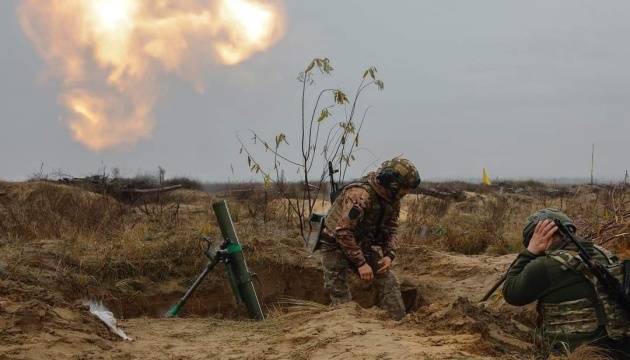

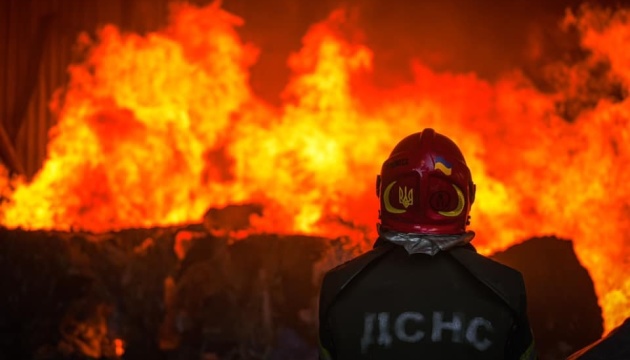



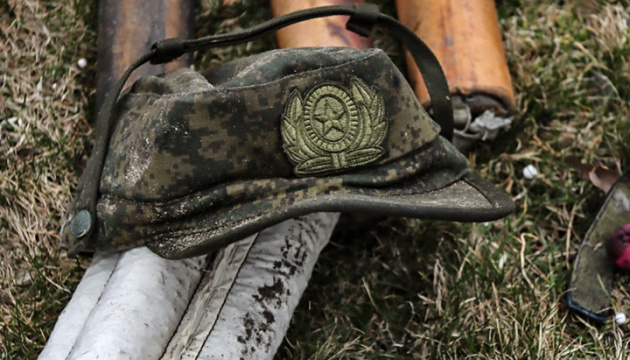



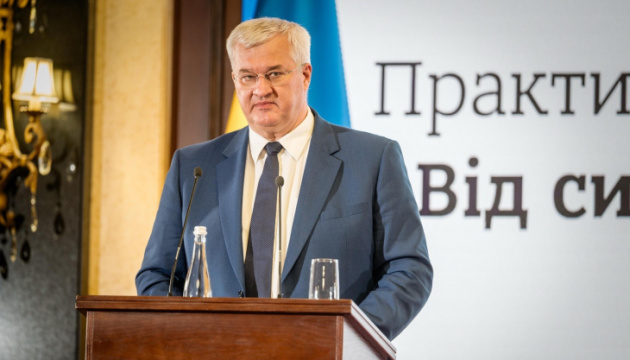

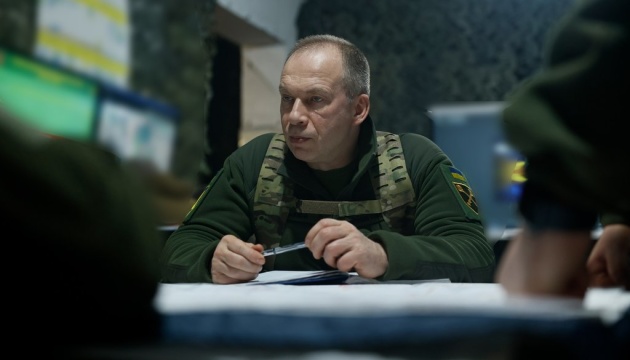





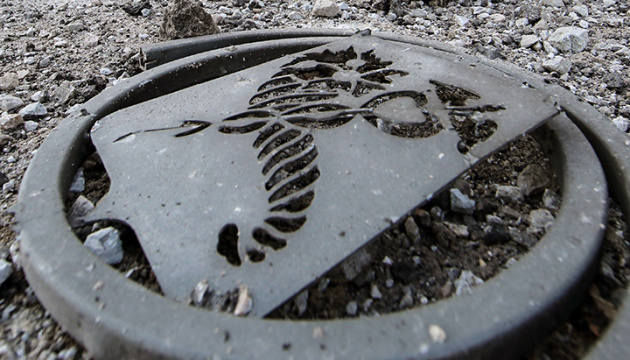







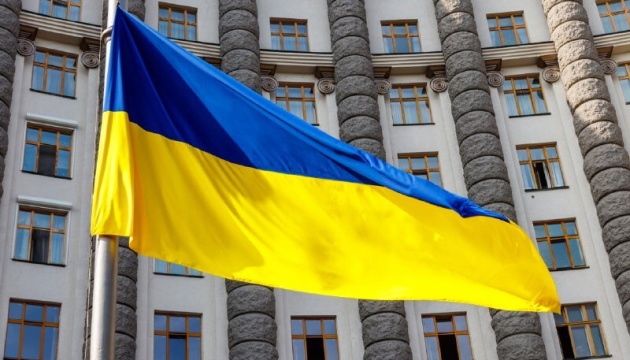

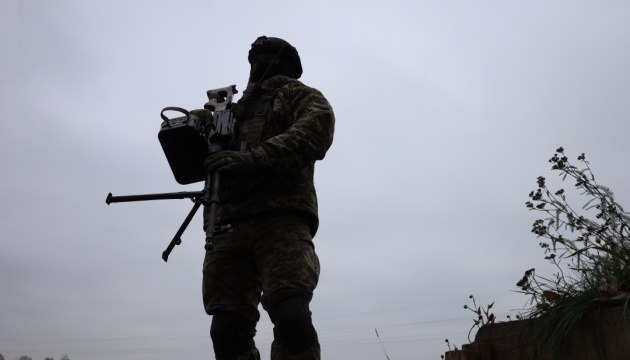

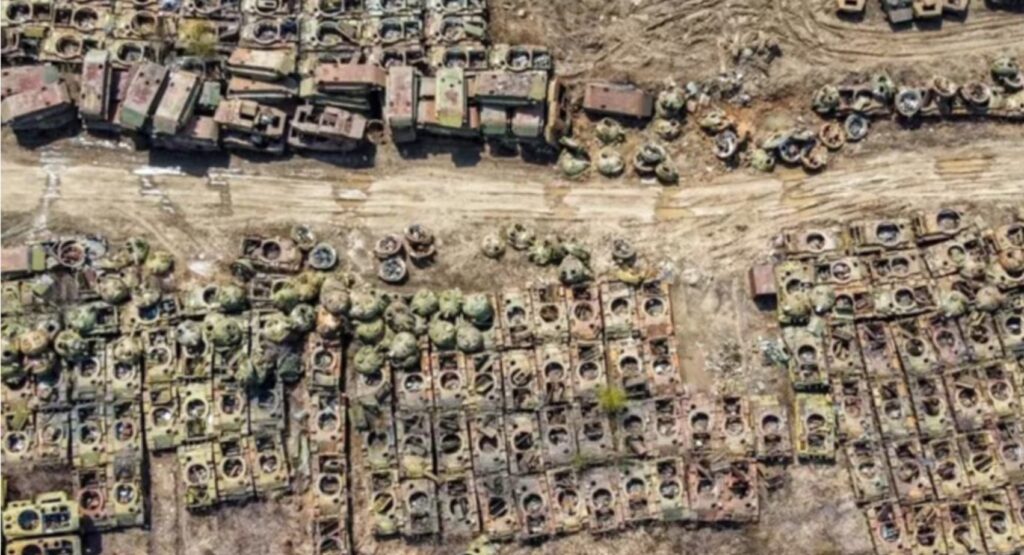

The growing proportion of the 46-ton, three-person T-72Bs in the Russian inventory is the latest sign that Russian regiments are “de-mechanizing.” That is, evolving—or devolving—into infantry-first formations that mostly ride into battle on motorcycles or other unarmored vehicles. Or simply walk.
The ongoing de-mechanization of the Russian military doesn’t mean Russia is losing its 42-month wider war on Ukraine. It does mean the Russian military will struggle to exploit its battlefield victories against manpower-starved Ukrainian brigades. Russian infantry may find gaps in Ukrainian defenses. But there are precious few Russian armored vehicles on hand to rush through the gaps—and drive deep behind Ukrainian lines.
Open-source intelligence analyst Jompy, who scrutinizes satellite imagery to survey Russia’s once-vast vehicle storage yards, was first to notice workers fetching more rusty T-72Bs from the 1311th Central Tank Storage and Repair Base, 850 miles east of Moscow.
As recently as a year ago, there were several hundred T-72Bs in various states of repair at the various store yards. Now the Russians are fetching them at a rate of around 20 a month, according to Jompy. “Once the few hundreds [of] T-72B hulls are gone,” the Russians will be “in real trouble with regard to their modern MBT fleet,” Jompy wrote, using the acronym for “main battle tank.”
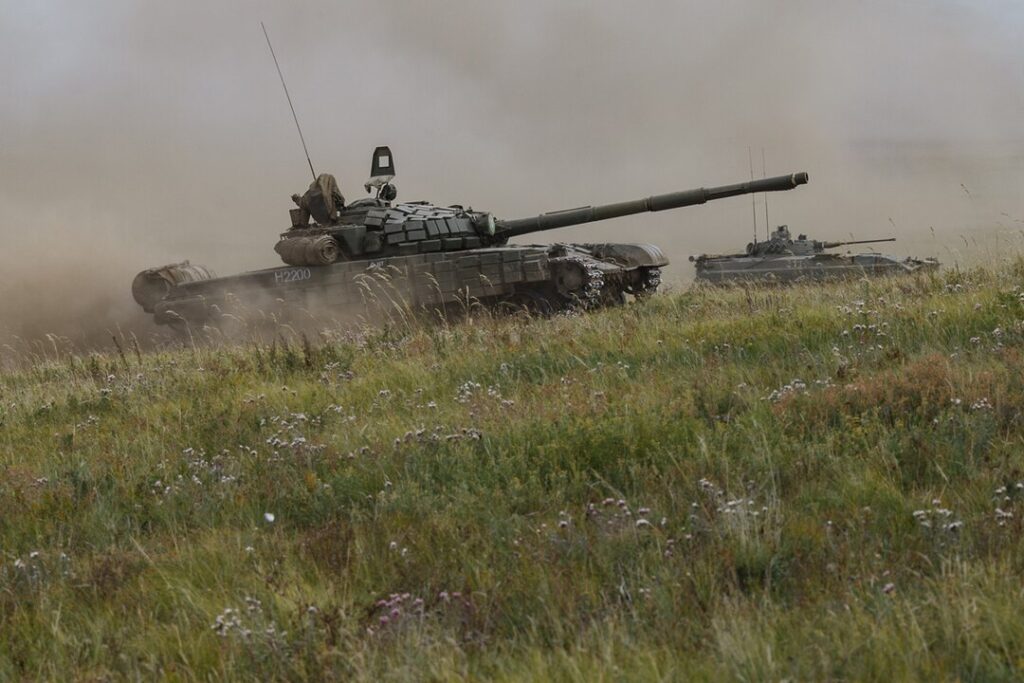
The T-72 has the same flaws all Soviet-style tanks have: most notably, ammunition stowage under the turret that’s prone to catastrophically exploding when hit. But compared to newer Russian tank models, the T-72B’s biggest problem might be its utterly antiquated optics, which can render the crew essentially blind under battlefield conditions.
There are worse tanks in the Russian arsenal, including 1960s-vintage T-62s and T-55s from the 1950s. But the Russians have already recovered most of the older tanks that were in reasonably good condition after decades of open storage—and then upgraded them and sent them to Ukraine, where many of them suffered the same fate that thousands of Russian tanks have suffered. Blown up by mines, artillery, missiles and drones.
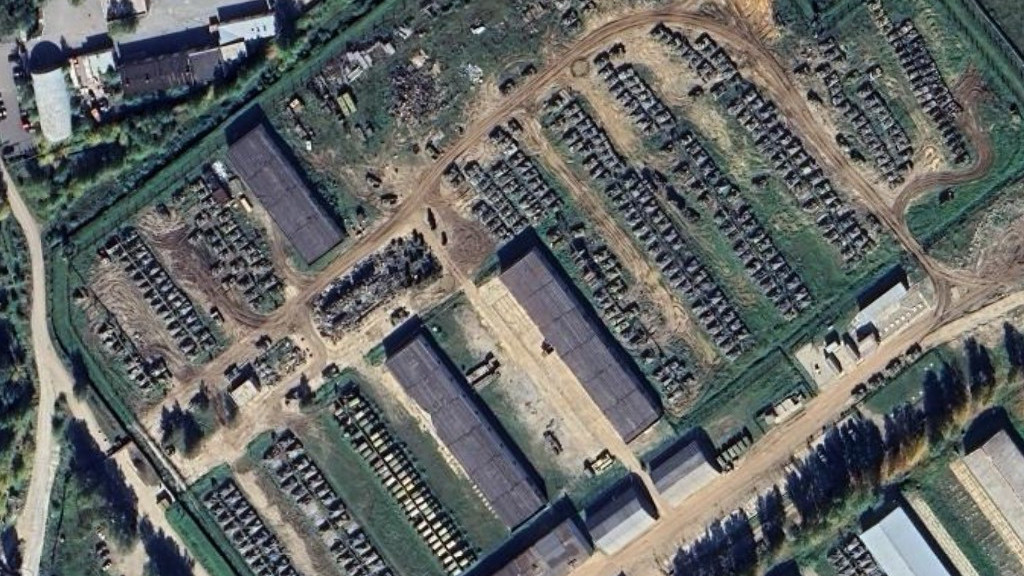
An old T-72B hull can be upgraded with new optics and layers of add-on anti-drone armor, albeit with great effort. The bigger problem for the Kremlin is supply. The several hundred T-72Bs that were extant a couple of years ago, and which are currently depleting at a rate of 20 per month, represented one of the last sizable tank reserves in Russia.
Once the reserves are finally gone—something that might happen this year—the Russian armed forces will only have as many tanks as Russian tank-makers can build new.
The good news for the Kremlin is that, despite successive rounds of sanctions on Russia’s arms industry, the Uralvagonzavod factory just north of the 1311th Central Tank Storage and Repair Base has managed to expand production of the latest T-90M tank.

That’s the conclusion of a recent study from the pro-Ukraine Conflict Intelligence Team. “According to our estimates, Uralvagonzavod produced 60 to 70 T-90M tanks in 2022. In 2023, amid efforts to mobilize the defense industry, output may have increased to 140 to 180 tanks, and by 2024, it may have surpassed 200 units annually, possibly approaching a production rate of 250 to 300 tanks per year.”
Three hundred tanks a year isn’t a lot of tanks, however—not for an army that’s struggling to break through along the 1,100-km front in Ukraine while also trying to preserve some mechanized forces for possible future conflicts.
More good news for the Kremlin: Ukraine’s manpower shortage is so dire—its brigades urgently need 100,000 trained infantry—that the manpower-rich Russian military can continue to advance in Ukraine without deploying a lot of tanks.
But increasingly de-mechanized, it can’t advance fast—or at low risk to its exposed infantry.

Technology is Ukraine’s chance to win the war. This is why we’re launching the David vs. Goliath defense blog to support Ukrainian engineers who are creating innovative battlefield solutions and are inviting you to join us on the journey.
Our platform will showcase the Ukrainian defense tech underdogs who are Ukraine’s hope to win in the war against Russia, giving them the much-needed visibility to connect them with crucial expertise, funding, and international support. Together, we can give David the best fighting chance he has.
Join us in building this platform—become a Euromaidan Press Patron. As little as $5 monthly will boost strategic innovations that could succeed where traditional approaches have failed.
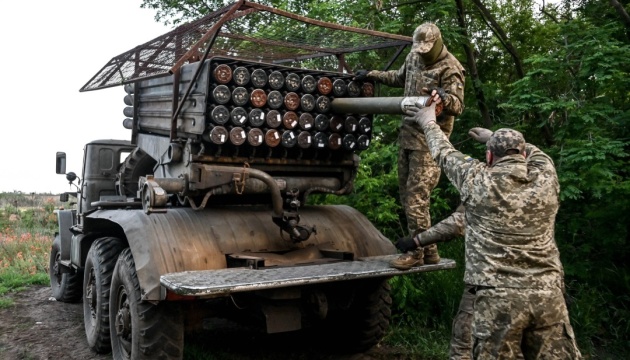



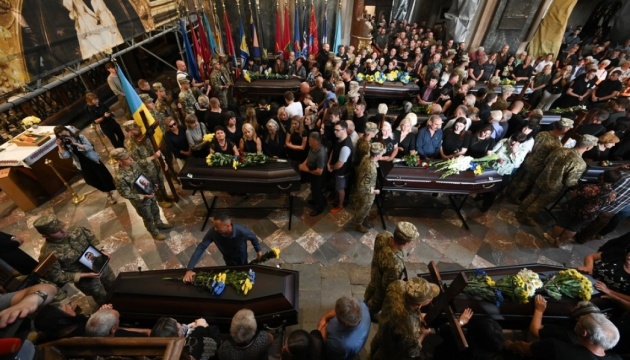

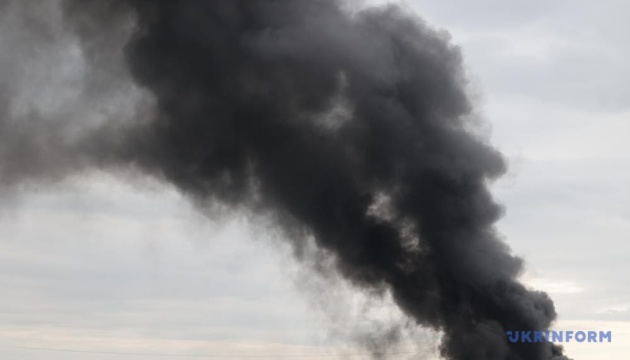

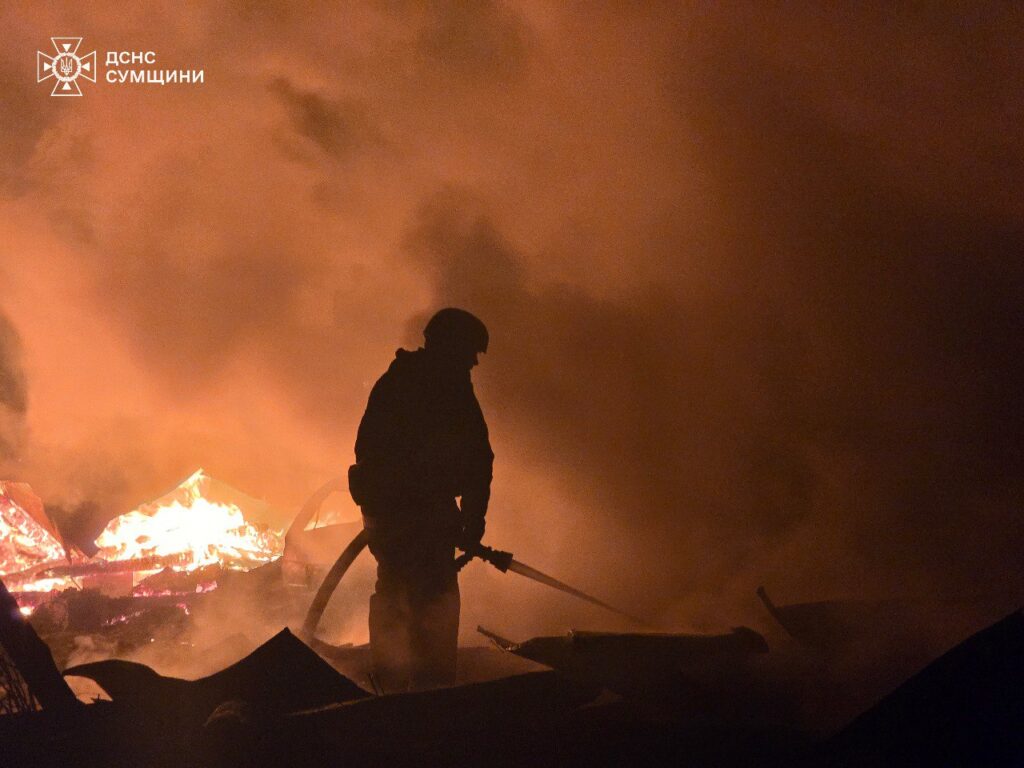

The world has grown accustomed to drone warfare as scattered strikes — the occasional Shahed hitting a Ukrainian city, maybe a dozen drones in a night, perhaps fifty during a major assault.
That was just the prologue.
Russia is now a step away from the capacity to launch thousands of drones simultaneously — not spread across weeks, but in a single coordinated strike that can overwhelm Ukraine’s entire air defense network.
In just three years, what began as a manageable threat has evolved into a relentless campaign that threatens to fundamentally change modern warfare.
According to Christina Harward, an analyst at the Institute for the Study of War, Moscow now produces approximately 2,700 Shahed drones per month, alongside 2,500 decoy drones. This production capacity means Russia can already launch over 300 or even 400 drones in a single night.
Additionally, the Kremlin is actively building new facilities and will soon be capable of launching between 1,000 and 2,000 drones simultaneously. Ukraine now faces an unprecedented drone war that dwarfs anything seen in previous conflicts.
The evidence for this escalation sits in last year’s attack data. In 2024, Russia launched 11,162 long-range drones against Ukrainian cities, critical infrastructure, defense industries, and increasingly, military positions. Ukraine’s air defenses performed admirably — neutralizing 90.2% of incoming drones. However, approximately 1,100 drones still reached their targets.
The missile campaign hit even harder. Russia fired 3,063 missiles of various types throughout 2024. Of these missiles, 58.5% (1,792 missiles) successfully reached their targets.
These success rates expose critical gaps in Ukraine’s air defense network. While Ukrainian forces managed to down 67% of cruise missiles like the Kalibr Kh-555/101, and R-500, they only intercepted only:
Each missile that gets through translates directly into destroyed infrastructure and civilian casualties, carrying a bill that stretches far beyond the initial explosion.
A United Nations Development Programme report estimates that $524 billion will be required for Ukraine’s reconstruction over the next decade — a sum that represents multiple years of the country’s pre-war GDP.
The physical destruction shows why that number is so staggering. By November 2024, Russian attacks had damaged or destroyed 236,000 residential buildings, over 4,000 educational institutions, 1,554 medical facilities, and nearly 500 large and medium-sized enterprises. Entire neighborhoods in major cities have been reduced to rubble.
Ukraine’s energy sector became a particular target. After 13 massive coordinated attacks throughout 2024, the country can only generate 15 gigawatts of power — 3-4 GW less than peak demand. That gap means millions of people lose heating during sub-zero winters, hospitals operate on backup generators, and factories shut down production lines that supply global markets.
However, the current crisis seems to be just the warm-up for what Russia has planned for 2025.
From the beginning of the year, Russia has already launched 32 large-scale drone and missile strikes — 16 of them have already became the war’s largest. As of July 24, Russia launched more than 27,780 Shahed drones and decoys, with the monthly numbers increasing by approximately 1,000 since April.
If the monthly increase continues, Ukraine faces 78,000 drone strikes — seven times more than in 2024. That’s equivalent to about 2,800-3,000 tons of high explosives.
Russia’s missile strategy tells a different story. During the first half of 2025, Russia launched over 700 missiles at Ukraine. If the trend persists, Russia is expected to launch around 2,100 missiles in total in 2025 – compared to 3,063 last year.
The shift is strategic: while Russian missile strikes might drop by 32% compared to 2024, drone strikes are likely to increase by 700%. Russia is trading expensive, limited missiles for cheap, mass-produced drones that achieve the same destructive goals. And the strategy is working — Ukraine is presently intercepting fewer drones (85%) than last year.
Two factors explain this declining success rate: changing Russian tactics and reduced Western air defense supplies.
Russian drones now fly higher and faster, putting them out of range of Ukrainian mobile air defense groups. They feature onboard cameras and artificial intelligence, indicating a shift from autonomous navigation to potential remote control, making interception much harder. Strike packages increasingly focus on one or two cities, synchronizing massive attacks from multiple directions and altitudes to overwhelm air defenses.
Russia also deploys stealthy drones as scouts and decoys to pinpoint Ukrainian air defense positions.
Meanwhile, the inflow of air defense systems, missiles, and ammunition has been inadequate since the war began — not from lack of Western commitment, but from lack of available weapons and ammunition in the West.
The US has also paused defense aid on at least four occasions since October 2023. On 4 June, the Trump administration diverted 20,000 anti-drone missiles originally meant for Ukraine to American forces in the Middle East.
Unless Ukraine’s air defense is significantly strengthened in 2025, up to 1,300 Russian missiles and 12,000 drones might breach air defenses and strike their targets.
Since Ukraine’s defense industrial base remains a primary target, continued escalation could force Ukrainian forces into supply shortages that determine the war’s outcome.
The only way to end the missile and drone strikes is to end the war. All other measures will at best reduce the scale and scope of the strikes — but not stop them.
Russia shows no intention of ending the war before achieving its strategic objectives. As international efforts to force Moscow’s compliance have failed, the number of Russian attacks will continue rising.
Yet, Russian missiles and drones can still be countered. Several options remain available to Ukraine — starting with going on the offensive.
As Kyiv faces growing challenges securing weapons and ammunition from its partners, the development of its own industrial base remains critical. More than 40% of the weapons used at the front line are now produced domestically, with a goal of 50% within six months. In the long term, Ukraine aims to become largely self-sufficient.
Over 95% of its drones are Ukrainian-produced, though many are financed by international partners. Ukraine’s total drone production has increased by 900% over the past year, with monthly UAV output reaching over 200,000. In 2025, it aims to produce 4 million tactical and 30,000 long-range strike drones. Overall, its drone industry has the capacity to produce up to 10 million UAVs annually but lacks funding.
Likewise, Ukrainian cruise missile production increased by 800% in 2024. Ukraine aims to produce approximately 3,000 cruise missiles and missile drones in 2025, matching Russia’s predicted output. Ukraine will be the first European country since the Cold War to produce a conventional ballistic missile.
In this light, Ukraine will focus on targeting the Russian defense industry, command and control facilities, bases, depots, and logistical hubs — actively undercutting Russia’s ability to wage war.
But offense alone cannot stop the drone swarms. Ukraine must also strengthen its defenses, and here international support becomes crucial.
Supported by Europe, Canada, Australia, and New Zealand, Ukraine continues developing its missile and drone defense network. The backbone of this defense network remains long-range missile systems, particularly Patriots.
Having sustained losses, Ukraine is believed to have only six functioning Patriot batteries – two from the US, with the rest provided by the European states.
On 14 July, President Trump announced a new arrangement: Washington will sell Patriot missile defense systems and other weaponry to NATO members and its allies, who will then donate them to Ukraine. European countries have expressed willingness to purchase weapons from the US and transfer them to Ukraine.
The arrangement generates $10 billion in Foreign Military Sales for the US and insists that the Patriots must be delivered by anyone but the US. This depletes Europe’s already vulnerable air defense network at a time when war is raging on the continent.
Meanwhile, Ukraine is developing its own surface-to-air missile systems for shooting down Russian missiles. The domestically produced system aims to match Patriot capabilities while reducing dependence on US supplies.
At the same time, Kyiv is also trying to acquire other air defence systems, such as the Italian-French SAMP/T, the Norwegian NASAMS, and the German IRIS-T, to expand its air defence network.
Norway has signed an agreement to develop and deliver low-cost, high-volume air defense missiles in Ukraine. The UK has agreed to supply more than 5,000 air defense missiles from Thales. In January, Ukraine received a new container-sized air defense system called Gravehawk, jointly funded by the UK and Denmark.
But even with these systems, Ukraine faces a fundamental math problem: traditional missile-based air defenses are too expensive to use against cheap Russian drones.
The solution lies in gun-based systems. Ukraine needs more German-made Gepard anti-aircraft guns and Skynex systems. These use programmable ammunition that’s significantly cheaper than missiles and can’t be jammed by electronic countermeasures. Battlefield performance has proven their effectiveness against drones and cruise missiles.
Trump’s decision to sell weapons to Europe and Canada could accelerate the delivery of both systems and Stinger missiles to counter Russian drone attacks.
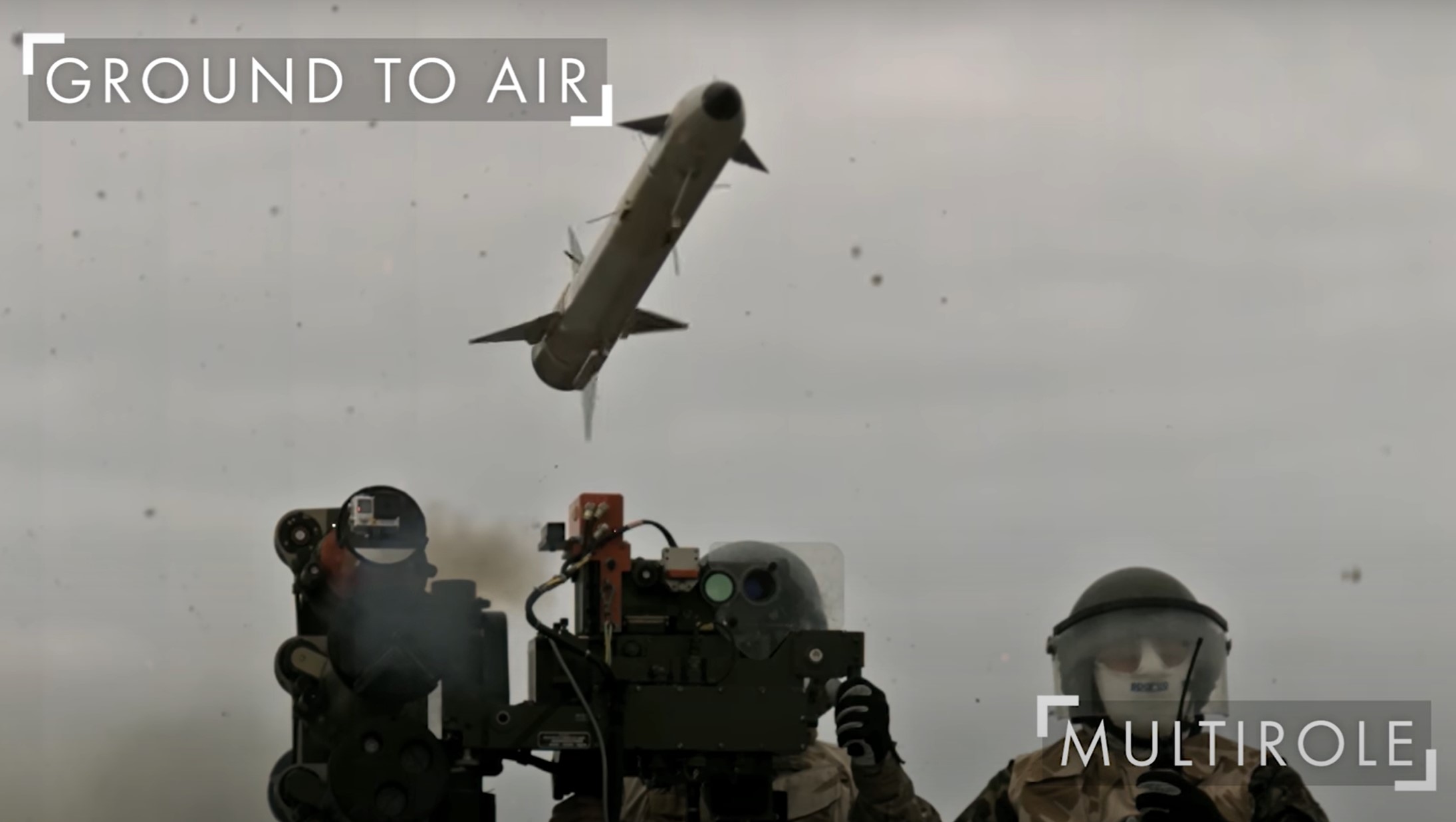
Ukraine, in the meantime, is developing its own solution: interceptor drones that hunt enemy drones in flight.
Medio May, the Unmanned Systems Forces of the Armed Forces of Ukraine, reported that Ukrainian forces had begun systematically downing Russian Shahed/Gerans UAVs with the help of interceptor drones. Fighters from the Darknode unit from the 412th Nemesis Regiment had successfully destroyed 100 long-range drones.
The Kyiv “Clear Sky” initiative demonstrates how this works. The program uses domestically produced interceptor drones to protect the city’s airspace, including specialized training centers and mobile rapid-response units. During its pilot phase, the project intercepted nearly 650 enemy drones with only 12 active crews — a network that has already expanded outside of Kyiv with plans to roll it out across the country.
The success of programs like Clear Sky has driven national-scale procurement. Ukraine’s Defense Procurement Agency has contracted tens of thousands of domestically produced interceptor drones worth $2.8 billion — more than a third of its total 2025 budget.
Ukraine is also purchasing interceptor drones from international partners, including a strategic agreement with the American company Swift Beat to supply hundreds of thousands of drones by the end of 2025. One of its AI-enhanced models is currently the most effective drone interceptor on the battlefield: the company’s drones have downed about 90% of all Shaheds downed by drones until now.
Ukraine faces a fast-escalating Russian strike campaign targeting its defense manufacturing — increasingly crucial as Western aid falters. Most pledged air defense systems won’t arrive until 2026-2028. Ukrainian interceptor drones remain the only immediate solution to the escalating drone war.
The stakes extend beyond military hardware. Ukraine’s resilience rests on interlinking strengths: military adaptation, economic transformation, societal unity, and institutional innovation. These pillars enabled Ukraine not just to survive, but to evolve under immense pressure. Massive Russian strikes threaten to undermine them all.
Russia’s ability to continue to escalate drone terror remains unimpeded unless the West revises its present strategy. Supported by China and Iran, Russia will scale up drone production while the weapons evolve — flying higher, faster, becoming stealthier and more resistant to electronic warfare.
It is time to take off the gloves. Ukraine needs long-range strike capability to target the Russian defense industry without restrictions. Europe must provide combat aircraft and ground-based air defense to bolster Ukraine’s network.
Most importantly, Europe must abandon wishful thinking. A coalition of like-minded countries must mobilize their own defense industries to deliver the capabilities needed to protect Europe — alongside Ukraine.
Europe’s first line of defence starts, after all, in Ukraine.
Editor’s note. The opinions expressed in our Opinion section belong to their authors. Euromaidan Press’ editorial team may or may not share them.
Submit an opinion to Euromaidan Press


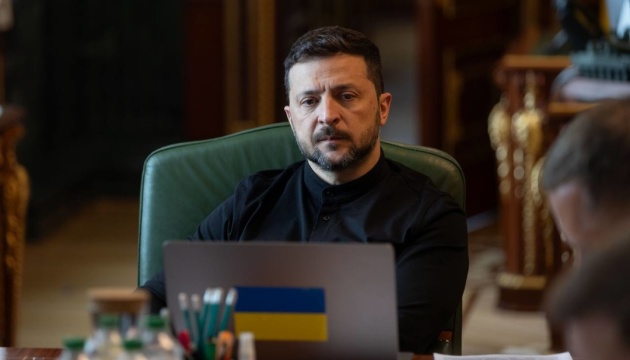

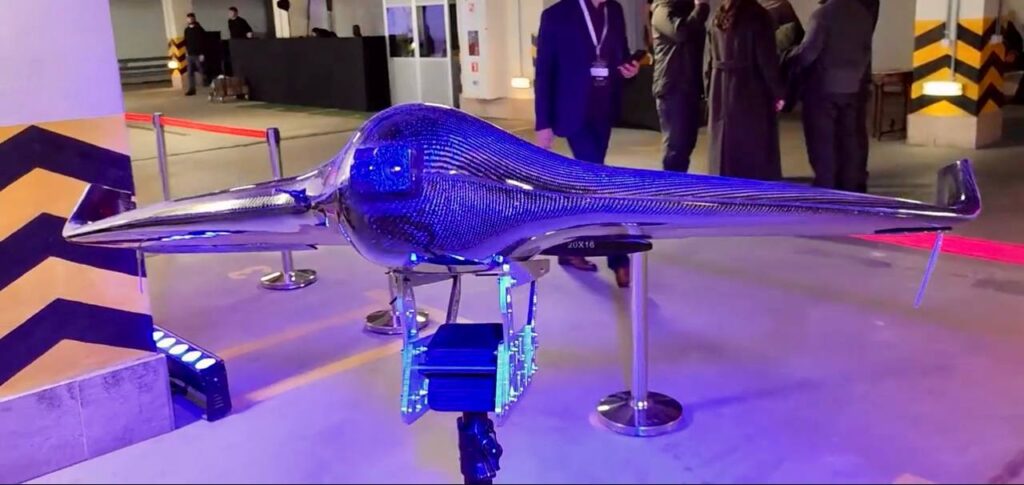

Russia has started using a new drone tactic in Ukraine. Russian Shahed kamikaze drones have begun performing complex maneuvers mid-flight in an apparent attempt to evade Ukrainian interceptor drones, according to electronic warfare expert Serhii Beskrestnov, also known as Flash.
Ukrainian interceptor drones are the country’s most advanced weapon for defending against Russian drones. President Volodymyr Zelenskyy has set a clear goal for domestic manufacturers: ensure the capacity to deploy at least 1,000 such interceptors daily to protect Ukrainian cities and military targets.
“Shaheds have started executing a set of complex in-flight maneuvers aimed at reducing the effectiveness of our aerial interceptor drones,” explains Beskrestnov.
According to him, the Russian military has long been preparing to counter Ukrainian interceptors, and this new drone approach is only the beginning.
Despite the new threat, the expert assures that Ukraine is actively improving its own interception technology.
In the first half of 2025, 6,754 civilians in Ukraine were killed or injured, the highest number for a six-month period since 2022, the UN reports. In July alone, Russia launched at least 5,183 long-range munitions at Ukraine, including a record 728 drones on 9 July. Kyiv and the port city of Odesa have been hit hardest in recent weeks.
“We will keep working on countering their tech with ours. You didn’t really think the enemy would abandon its most widespread weapon so easily, did you?” the expert says.
Shaheds remain one of the main threats to Ukraine’s rear, making the development of interceptor drones a key component of defense. As the situation shows, the air war is entering a new phase, the one where each side upgrades its unmanned systems in real time.

